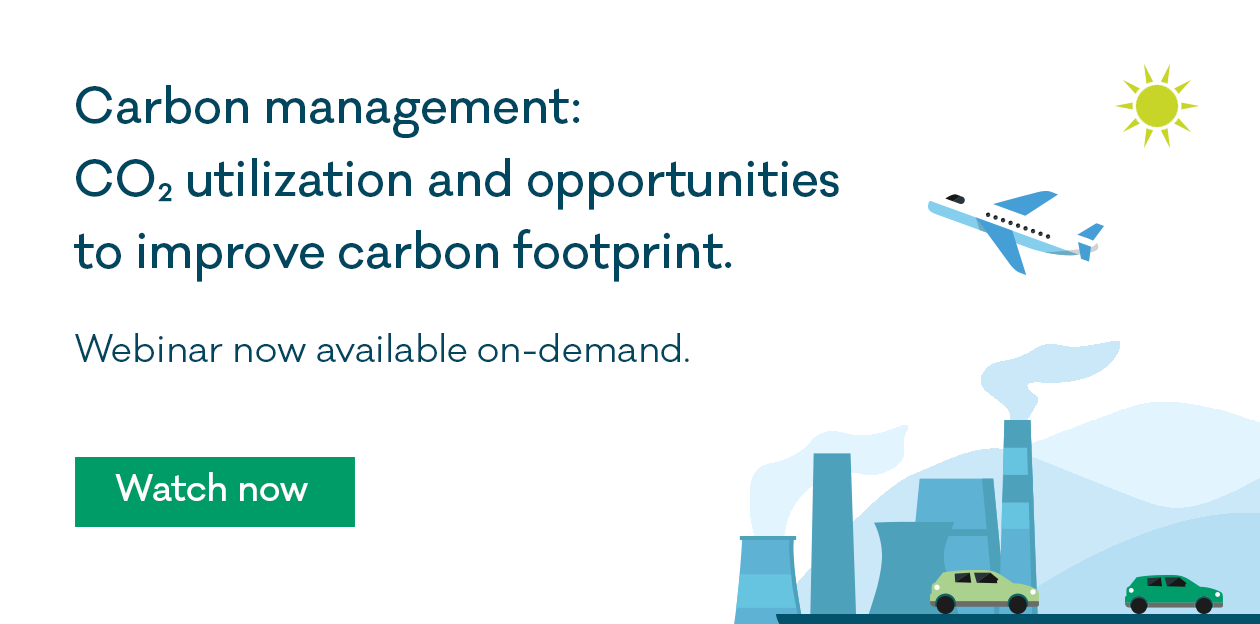Carbon Management

The road to reducing CO2 emissions in the chemical industry
Carbon management helps to transform the chemical industry and transportation sector towards greater sustai-
nability. Key element for reaching this goal is the utilization of CO2 as feedstock in the industrial value chain with
optimized catalysts and processes. High throughput technology speeds up R&D in CO2 utilization and helps to improve carbon footprint. hte supports catalyst development and process optimization by challenging existing processes or creating new production routes. We offer solutions to utilize CO2 as a feedstock for sustainable fuels and chemicals and also for related processes including H2 production, storage and transport.
Carbon management process map
CO from CO2
With rapidly rising CO2 emissions over the past years, a shift in the raw material base away from coal and oil towards gas and renewable feedstocks as sources of energy and material plays a major role, as does increased process efficiency. High throughput technology can greatly support the development and optimization of processes such as rWGS and dry reforming towards a lower CO2 footprint.
Additional information in our latest publications
1. The demand for CO2 neutral fuels and chemicals has been constantly rising. rWGS, a key step to transform CO2 into valuable products, can be accelerated with the use of high throughput technology. Read the case study presented at the 30th Conference of the Petrochemistry Division of DGMK in 2022 to find out more.
2. Catalytic dry reforming under industrially relevant conditions comes with various challenges regarding the catalyst materials and process engineering. Dive deeper into this topic by reading the review article, pubslished in ChemCatChem.

Methanol synthesis
Methanol has one of the highest production capacities among organic base chemicals and is thus of extreme importance for the global chemical industry. One unique feature of MeOH is its versatility. It can be starting material for other oxygen-containing base chemicals (formaldehyde, acetic acid), be used to produce light olefins and fuels via the various methanol-to-hydrocarbons processes and serve as a drop-in fuel in combustions engines.

Additional information in our latest publications & press release
1. Learn more about how Haldor Topsoe tests its MeOH catalysts in hte's parallel 16-fold high throughput system under industrially relevant operating conditions in our press release.
2. The production of MeOH from synthesis gas is a highly important chemical process. In the DGMK Conference Paper, we present selected results of different MeOH synthesis projects, including the generation of MeOH both with high productivity and high gas utilization by operating the sub-pilot rig in recycle mode.
3. Simultaneously, the conversion of methanol and dimethyl ether to hydrocarbons has gained significance over the last years. Read more about the Dimethyl Ether-to-Olefins Conversion on SAPO-34 in our article, published in The Catalyst Review.
Fischer-Tropsch synthesis
Fischer-Tropsch synthesis is an established process, however, gets more and more attantion lately. Next to the commonly produced syngas from methane reforming, new routes via waste, biomass or CO2 are emerging. Coupled with Fischer-Tropsch synthesis, a broad product spectrum containing paraffins, olefins and oxygenates can be produced to be utilized for fuels or chemicals production.
Additional information in our latest publications & literature
1. Read the case study about the preparation and high-throughput testing of TiO2-supported Co catalysts for Fischer-Tropsch Synthesis, published in Catalysts.
2. In the FTS paper from the DGMK conference 2015 our experts published insights on accelerated catalyst testing for synthesis gas reactions.
3. Fischer-Tropsch products can be refined to sustainable fuels, which are essential to reduce the carbon footprint in the transportation industry, in particular for modes of transportation such as aviation. Read more about our technology for Fischer-Tropsch wax upgrading in the Hydrocarbon Engineering article.

Ammonia cracking

NH3 is a promising candidate for efficient long-distance and carbon-free hydrogen storage and transportation in large scales. NH3 is produced in areas where energy and natural gas is likely available and will be shipped to areas with high H2 demand. The decomposition of NH3 to release H2 is energy intensive, since high temperatures are required, especially when the cracker is operated at elevated pressures for the direct use of pressurized H2.

Additional information in our latest publication
1. Our article, published in Decarbonisation Technology, illustrates how high throughput technology can enhance catalyst screening and process optimization for energy-efficient NH3 cracking.
CONTACT US

Dr. Charlotte Fritsch
Business Development Manager
T +49 6221 7497 429
E charlotte.fritschhte-company.de




